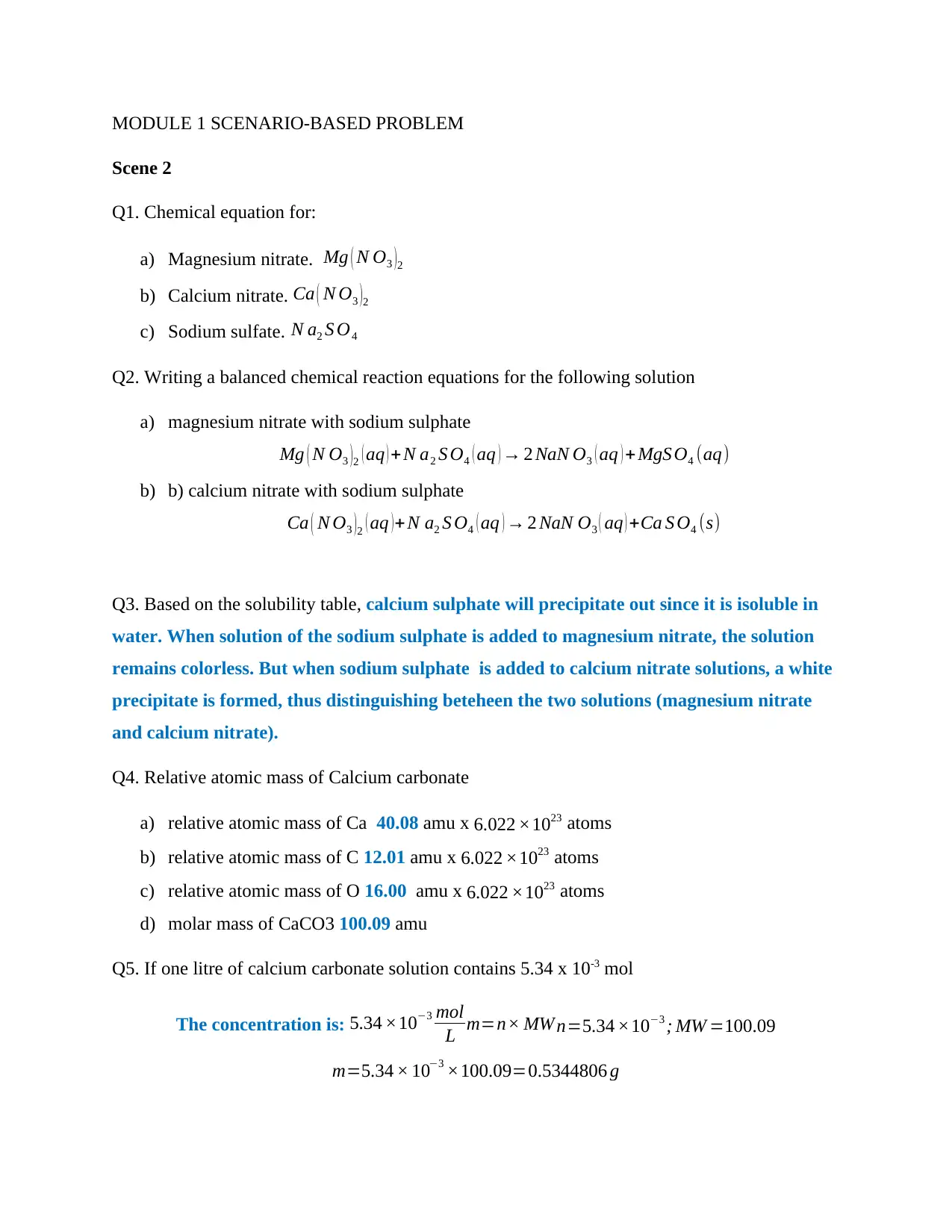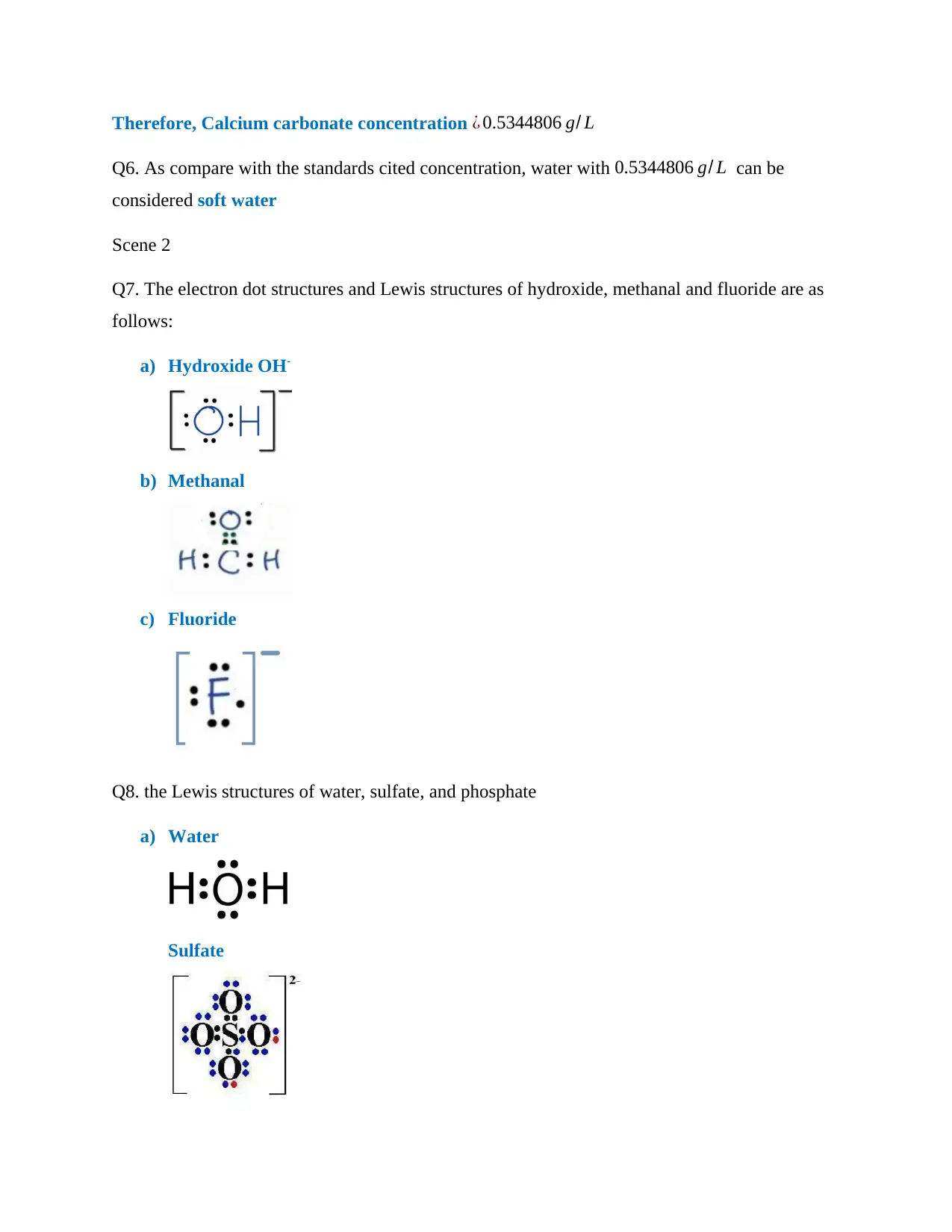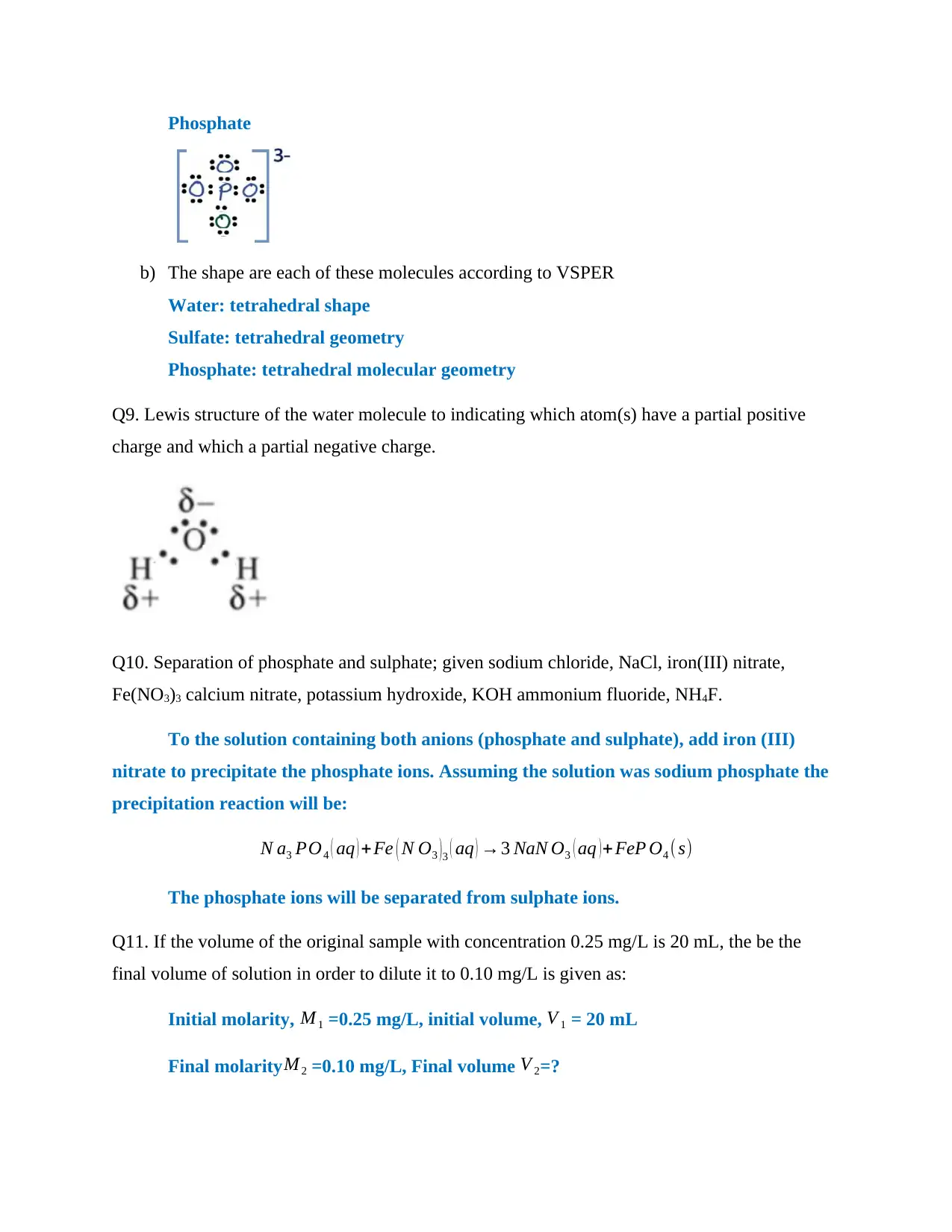Chemical Reactions and Solutions: Balancing Equations and Structures
VerifiedAdded on 2020/05/28
|4
|424
|397
Homework Assignment
AI Summary
This chemistry assignment solution addresses several key concepts in chemistry. It begins with balancing chemical equations and exploring the reactions of magnesium nitrate, calcium nitrate, and sodium sulfate. The solution then calculates the relative atomic mass and molar mass of calcium carbonate, and determines the concentration of a calcium carbonate solution. The assignment further delves into Lewis structures for hydroxide, methanal, and fluoride, as well as the water, sulfate, and phosphate molecules, including their shapes. Finally, it outlines a method for separating phosphate and sulfate ions and calculates the dilution of a solution. This assignment is designed to help students understand chemical reactions, stoichiometry, and molecular structures.
1 out of 4










![[object Object]](/_next/static/media/star-bottom.7253800d.svg)